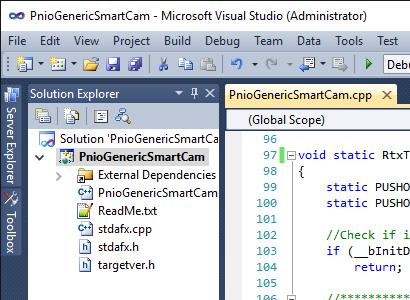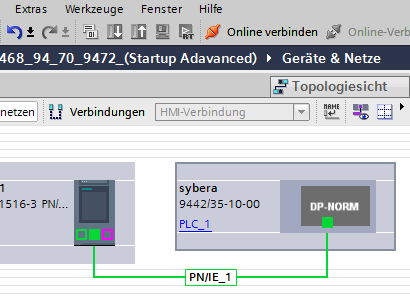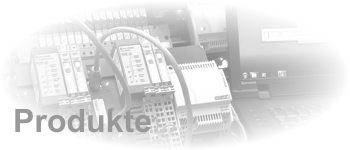- Multi Device Management
- Simulation of entire plants
- Real-Time Simulation
- Update Cycles upto 250 usec
- ProfiNET Service Interface
- Alarm Handling
- Error Management
- Sequence Log
- GSDML Device Configuration
- State Management
|

|
 |
Programming with VisualStudio |
|
Use with Siemens TIA Portal |

|

|
GSDML device configuration with diagnostics |
- Simulation of assembly lines
- Simulation of packaging systems
- Simulation of machine tools
- Simulation of production lines
- Presentation and Marketing
|

|
ProfiNET Device - Real-time Simulation for Windows
|
|
With the ProfiNET Device Stack for Windows, a complete system can be simulated at real-time with a PC.
The stack offers the possibility to read in existing GSDML files of real devices and to configure them
for the simulation. So the simulated devices behave like in the real world. In combination with the
"X - Realtime Engine" from SYBERA, the realtime simulation behaves like the real system. The device
simulation is carried out directly from the PC using standard Ethernet adapters. The physical connection
to the PLC is made using commercially available INTEL or REALTEK PCI (e) adapters. A corresponding PCMCIA
or ExpressCard (PDF) adapter is also possible. This means that no additional hardware is required and
there is no need for separate ProfiNET hardware. The basis of the programming library is the ProfiNET
Device Stack with the "X - Realtime" technology. The software runs on Windows and enables the simulation
of several ProfiNET devices simultaneously at real-time. Depending on the PC hardware and application,
telegram update times of up to 250 μsec can be implemented.
|
ProfiNET Device - Functionality
|
|
With the integrated station management of the ProfiNET device stack, the devices can be managed and
operated almost completely implicitly. Each individual function step (ProfiNET service) can also be
controlled in a targeted manner. In addition, SYBERA has developed the comprehensive test software
PNIOVERIFY. This software enables the developer to test the simulated ProfiNET devices and carry out
the parameterization. The developer is guided interactively through the individual function groups
and states. All information is visualized in detail.
|
ProfiNET Device - Technology
|
|
Here, not only the sending and receiving of industrial Ethernet protocols according to the ProfiNET
specification is realized at real-time. The interface also enables the functional processing of the
ProfiNET telegrams in a separate real-time task. The system is based on 4 real-time tasks: sending
and receiving Ethernet frames, processing user data and error handling. The tasks are functionally
synchronized via a STATE machine. A real-time task detects frame errors and hardware latencies. It
is also checked whether a response telegram was received for a sent ProfiNET telegram (e.g. in the
event of a timeout), whether the working counter of the response telegram has been increased and
whether the index fields of the send and receive telegrams match. With a frame filter, the ProfiNET
telegrams are separated from the Ethernet frame at real-time and transmitted to a telegram stack.
The developer has the option of implementing the functional processing (e.g. Realtime Level2) in a
real-time task at the system or application level.
|
ProfiNET - Training
|
|
In order to be able to use fieldbus communication efficiently, Sybera offers the training
"ProfiNET Development"
. In our training, we impart knowledge in a neutral and product-independent manner. The course provides
a comprehensive insight into ProfiNET technology using examples and practical exercises. The focus of the
training is on ProfiNET specification, topology, protocol management, Profinet services, communication and
application relationships, acyclic and cyclical protocols, ProfiNET RT and IRT communication, alarm handling,
project planning, GSDML device description and configuration. The participants of the training receive detailed
background information about ProfiNET for daily use and consolidate their knowledge with Wireshark analyzes.
Different training devices are available for the examples. The participants of the training will also be able
to independently configure, program and analyze ProfiNET projects. The training is aimed at all users, developers
and service technicians.
|

